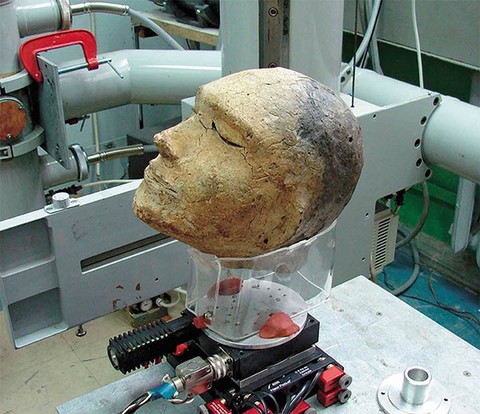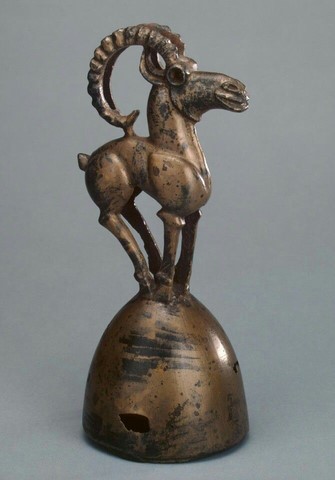The handsome dead with the ram-bones
2,100y-old Tagar relic reveals surprising burial rite

The discovery of the magnificent clay likeness of a young man in the Shestakovsky burial mound No 6 has long intrigued Russian archeologists.
Among cremated people this elegant mask of, perhaps, a handsome warrior immediately stood out as a remarkable find when it was first unearthed in Khakassia in 1968 by Professor Anatoly Martynov.
X-ray technology of the period indicated something was unusual about the bones inside the clay head - but could not reveal more...
Who were the Tagars?

"The Tagar culture (flourished in seventh to second centuries BC) covered the region of the Minusinsk Basin in the upper reaches of the Ienissei River. Livestock breeding constituted the economic basis of this culture, whose people combined semi-settled and migratory types of herding. Their ability to ride horses allowed the Tagar people to develop migratory cattle herding system, using all-year pasturage on the steppe lands in their territory. On the remaining part of their territory, the Tagar people employed the old semi-settled, cyclic type of livestock herding. Agriculture was further developed during the time of the Tagar culture period. Although the mattock remained the main tool, people started building and maintaining irrigation systems to water fields in the Minusinsk Basin. In this culture, metallurgy gradually began to turn into a separate industry. Bronze casting was developed to an exceptional perfection (see picture : Ram dated between 2nd and 8th century BC). The artefacts made by Tagar craftsmen were distributed throught Siberia, Central Asia and Eastern Europe. From the Fifth Century BCE, the people of the Tagar culture mastered the art of producing iron, from which they made the most necessary items for life such as axes, weapons, knives, mattocks, etc.
The combination of settled and miratory livestock breeding and the mastering of iron production led to improvements in housing. The Tagar people used two types of dwelling : a light, collapsible one, the yurta, and a solid one. They began to build long-huts, instead of semi-dugouts, containing open hearths.
Like other Siberian peoples, they lived in a kinship system. At the same time, wealthy kinsmen and the tribal elite achieved social prominence : huge kurgany were built over their graves. The largest Tagar tumulus, the Salgyk kurgan, was 11 meters high with a base 500 meters in diameter. Around it there was a ring of huge, six-meters vertical stone slabs, each weighing 20 to 50 tons. A noble warrior, with his slaves and wives, was buried in the tumulus. The Tagar people were of the Europeoid anthropological type."
From: Igor V. Naumov -The History of Siberia

